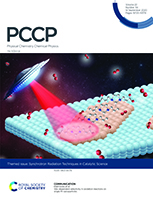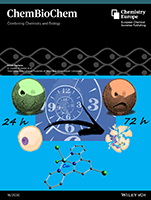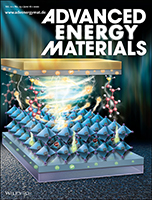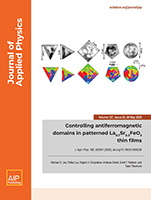Heterogeneous catalysis is a surface-controlled phenomenon in which different surface sites often show variations in reactivity, posing a major complication for the chemical industry. Here, site-dependent selectivity in oxidation reactions on Pt nanoparticles was identified by conducting IR nanospectroscopy measurements while using allyl-functionalized N-heterocyclic carbenes (allyl-NHCs) as probe molecules. Read more »
Journal Covers
Reversible Room-Temperature Fluoride-Ion Insertion in a Tunnel-Structured Transition Metal Oxide Host
Fluoride ions show promise as charge carriers in batteries but have limited cyclability. Here we show the reversible and homogeneous topochemical insertion/deinsertion and bulk diffusion of F ions within the one-dimensional tunnels of submicrometer-sized FeSb2O4 particles at room temperature. Read more »
Thermoinduced Crystallization-Driven Self-Assembly of Bioinspired Block Copolymers in Aqueous Solution
Thermoinduced crystallization-driven self-assembly of polypeptoid-based block copolymers results in delicate control over the nanostructure in aqueous solution. This provides a convenient platform for comparing cellular uptake efficiency of nanostructured assemblies with various morphologies that are otherwise similar. Read more »
Structural Features Mediating Zinc Binding and Transfer in the AztABCD Zinc Transporter System
Zinc homeostasis is critical for bacterial survival and virulence. Extracellular zinc-binding proteins play an important role in this process. This work assesses the role of several flexible or unstructured sequences in zinc binding and transfer from proteins AztD to AztC. The results provide insights into the dynamic nature of these processes and support a previously proposed structural model of transfer. Read more »
Evaluation of Free Energy Calculations for the Prioritization of Macrocycle Synthesis
Free energy perturbation methods represent a paradigm shift in drug discovery, where computational methods inform benchtop activities. Macrocycles are highly constrained molecules, often resulting in nonintuitive structure–activity relationships requiring lengthy synthetic routes. Free energy perturbation methods can be used to predict potency, guiding synthetic chemistry efforts to de-risk complex synthesis. Read more »
Time‐Dependent Cytotoxic Properties of Terpyridine‐Based Copper Complexes
The cover feature picture shows the progressive activation of terpyridine‐based copper(II) compounds that are not cytotoxic against various cell lines after 24 h of incubation but become highly efficient after 72 h of incubation, with IC50 values in the low‐micromolar to nanomolar range. Read more »
Crystal structure of the catalytic subunit of bovine pyruvate dehydrogenase phosphatase
The crystal structure of the catalytic subunit of bovine pyruvate dehydrogenase phosphatase provides new insights into the mechanism of the regulation of the activity of the pyruvate dehydrogenase complex. Read more »
Energetics and Energy Loss in 2D Ruddlesden–Popper Perovskite Solar Cells
Qinye Bao and co‐workers systematically investigate the energetics and energy loss in 2D Ruddlesden‐Popper perovskite (RPP) solar cells. The crucial scenario found at the 2D RPP/electron transport layer interface is that the potential gradient across ligands promotes separation of the photogenerated carrier, with electrons transferring from the perovskite crystal to the electron transport layer. Read more »
Controlling antiferromagnetic domains in patterned La0.7Sr0.3FeO3 thin films
Antiferromagnetic spintronics have gained interest because they can be controlled at terahertz frequencies and are insensitive to external magnetic fields. Due to dimensional confinement as well as microstructuring by ion implantation, the spin axis of an antiferromagnetic oxide can be robustly controlled in a deterministic way up to room temperature. Read more »
Efficient Organic Solar Cell with 16.88% Efficiency Enabled by Refined Acceptor Crystallization and Morphology with Improved Charge Transfer and Transport Properties
Feng Liu and co‐workers report a detailed structure‐performance relationship to help understand the success of Y6 non‐fullerene acceptors. Through the analysis of the single crystal structure of Y6, it is found that Y6 forms a polymer‐like conjugated backbone through its banana‐shaped structure and π‐π interactions between molecules, and forms a 2D electron transport network under the ordered arrangement of the lattice. Read more »
- « Previous Page
- 1
- …
- 11
- 12
- 13
- 14
- 15
- …
- 21
- Next Page »









